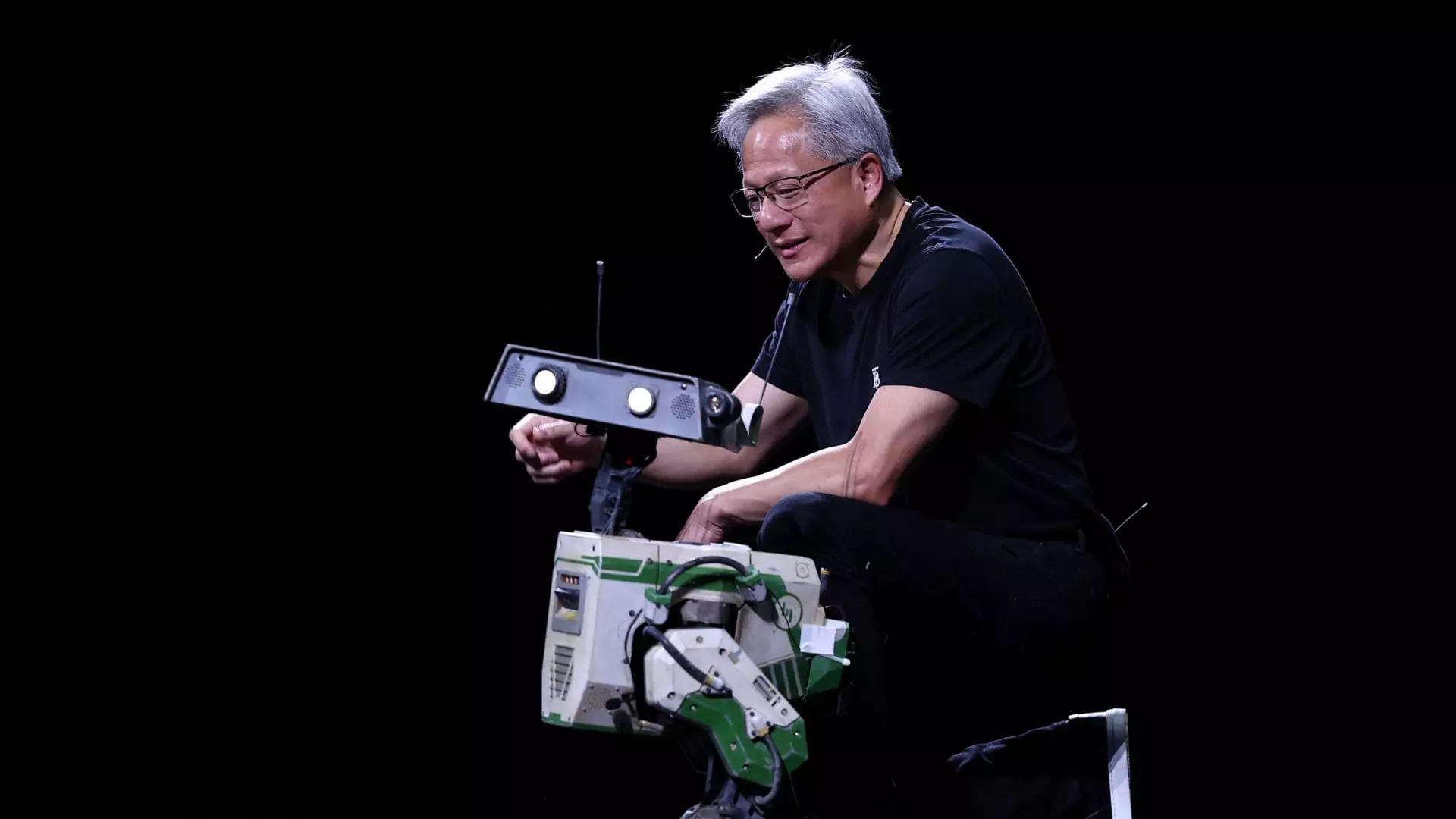At the crossroads of artificial intelligence and robotics lies Nvidia, a technology giant that is redefining the landscape of computing. Jensen Huang, the dynamic CEO, articulated a vision where AI and robotics will not only dominate but will also pave the way for sustained multitrillion-dollar growth opportunities. His assertion that self-driving cars will be the frontline application of robotics is not merely a forecast; it is a declaration of intent from a corporation that is constantly pushing the boundaries of technology. This article delves deeper into Nvidia’s strategic pivot towards robotics and its implications for the broader tech ecosystem.
A New Era of Reporting and Growth
In an impressive move to streamline its operations, Nvidia revamped the way it reports financial metrics, consolidating its automotive and robotics units into a singular line item. This strategic alignment is more than just accounting; it reflects an understanding of market dynamics that recognizes the symbiotic relationship between these sectors. Recent financial disclosures reveal that this newly formed unit has shown remarkable growth, with a staggering 72% increase on an annual basis. With quarterly sales hitting $567 million, even though it’s a small percentage of Nvidia’s overall revenue, it signals a robust expansion in an area previously underestimated by many.
As the company’s overall sales have skyrocketed—from $27 billion in fiscal 2023 to a projected $200 billion this year—their success is indisputable. The meteoric rise of their data center graphics processing units (GPUs) has been fueled by the surging demand for sophisticated AI applications. The simultaneous emphasis on their robotics and automotive prospects suggests an agile company willing to adapt to changing market demands and technological advancements.
The Drive Towards Autonomous Innovation
Nvidia’s ambitious Drive platform is a testament to their innovative spirit, as it aims to lead the charge in self-driving technology. With collaboration agreements—such as the one with Mercedes-Benz—Nvidia is not just creating chips; they are crafting the very backbone of future autonomous vehicles. This partnership exemplifies how the tech giant is transitioning from a traditional chip manufacturer to a comprehensive “AI infrastructure” provider. With Huang stating that they have moved beyond viewing themselves as just a chip company, the implications are monumental.
By packaging its chips alongside software solutions and cloud services, Nvidia is positioning itself as an indispensable player in the AI ecosystem. Their pioneering of AI models for humanoid robots under the “Cosmos” initiative indicates an expansive vision for how robotics can integrate seamlessly with intelligence, creating machines that are not only autonomous but also adaptable to varied environments.
The Future is Robotics
Nvidia’s long-term outlook is ambitious and reflects a firm belief in the robotics revolution. Huang’s bold predictions about the proliferation of billions of robots and autonomous vehicles point toward a future where these technologies are ubiquitous. While this vision may appear distant, the groundwork being laid today is crucial. Nvidia’s chips could soon find themselves at the core of everything from factories to smart homes, marking a pivotal shift in how technology interacts with daily life.
Such transitions bring both opportunities and challenges. The integration of AI in robotics forces ethical considerations, as the roles of human workers may be affected. However, Nvidia’s proactive engagement in shaping AI alongside robotics offers a balanced path forward. The road to mass adoption of these technologies will necessitate extensive collaborations, research, and ethical frameworks to ensure they function within human-centric environments.
Total Transformation of a Tech Titan
As Nvidia continues to evolve its brand into that of a computing platform provider, it stands to inspire other companies within the tech sector. Their innovative combinations of hardware, software, and services provide a template for how firms can pivot to meet emerging needs, encouraging a shift to a more integrated approach within the industry. It is also a clear indication of how one company is not just adapting to change but is driving it, showcasing the profound impact of a visionary leadership on technological advancement.
Nvidia’s strategic direction under Jensen Huang is setting the stage for an unparalleled convergence of AI and robotics. As they cultivate growth in these areas, the implications could redefine economic structures, influence industries, and undeniably alter the fabric of our society. The future is tantalizing and, if Nvidia’s trajectory is any indication, we can expect breakthrough innovations that will leave an indelible mark on the world.


Leave a Reply